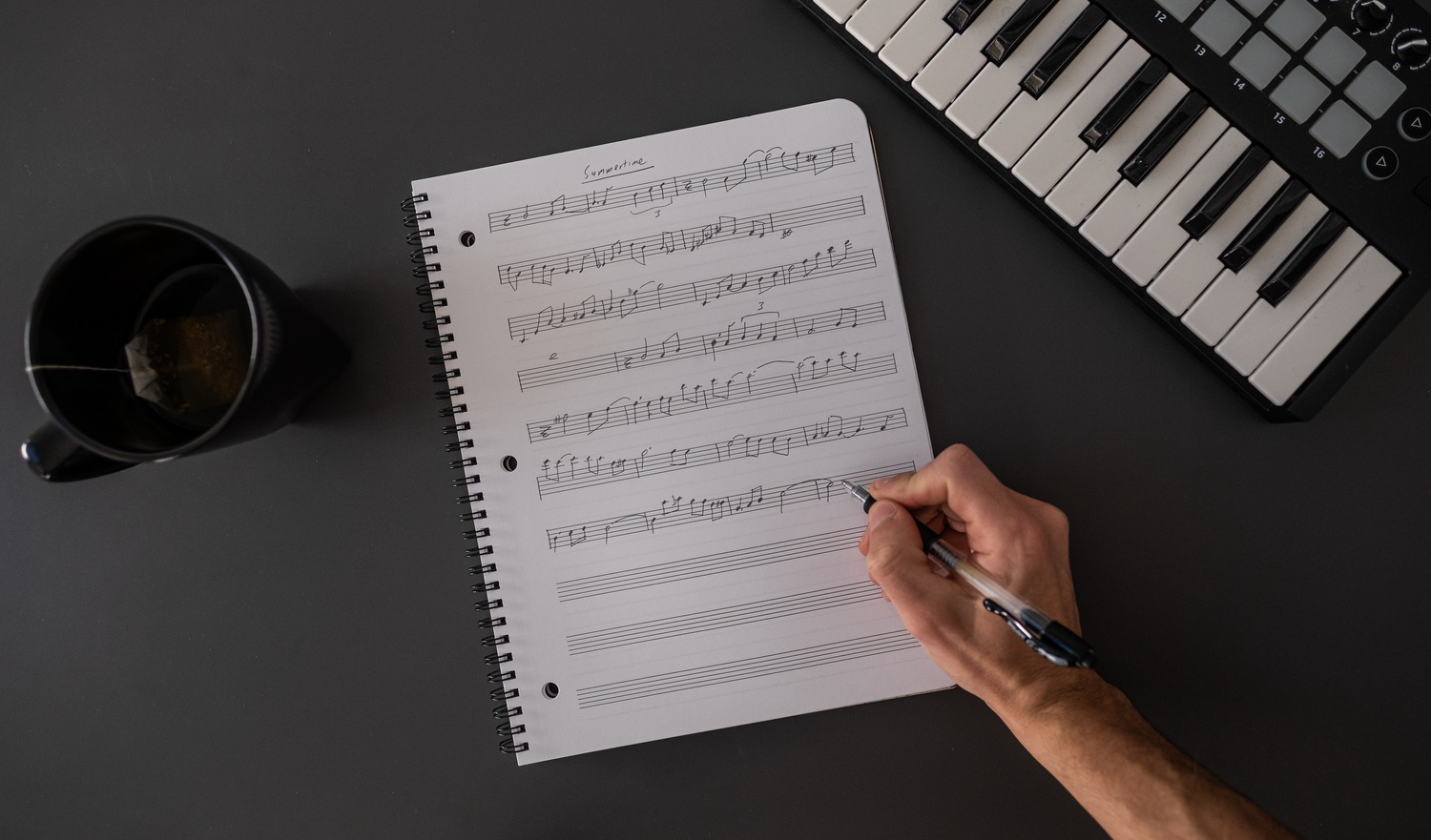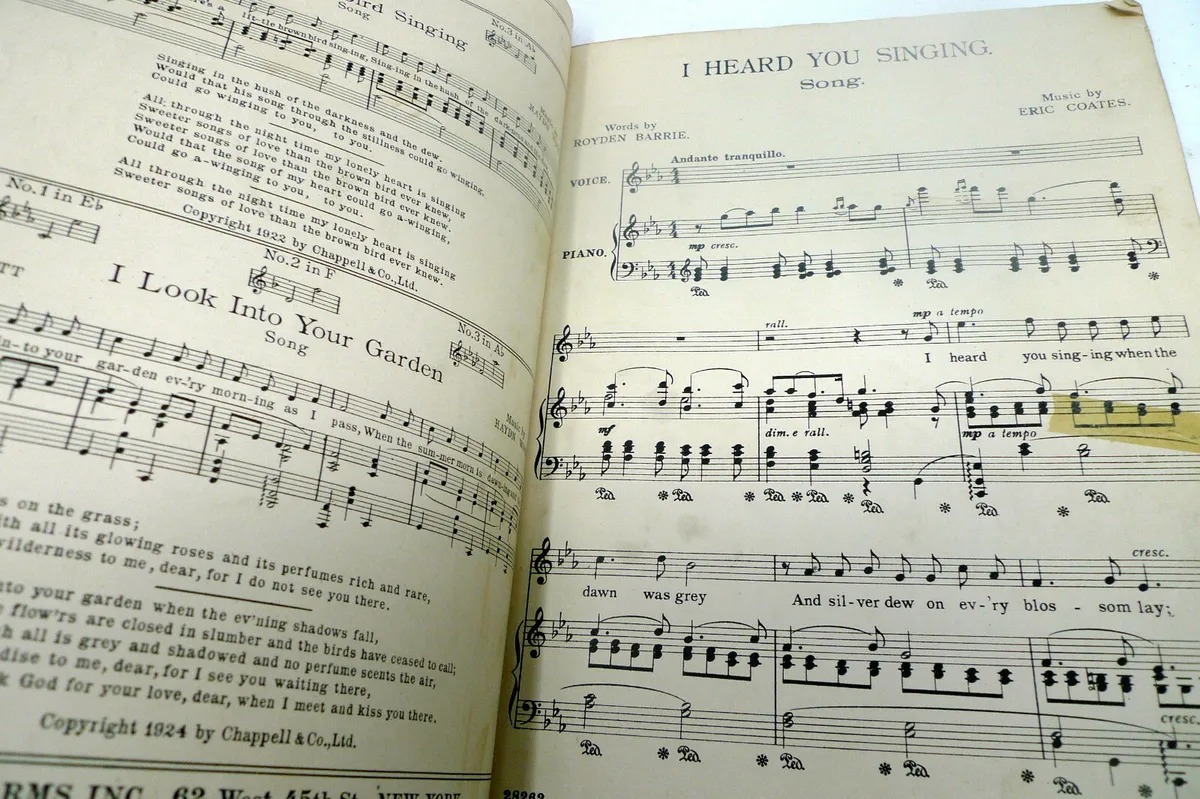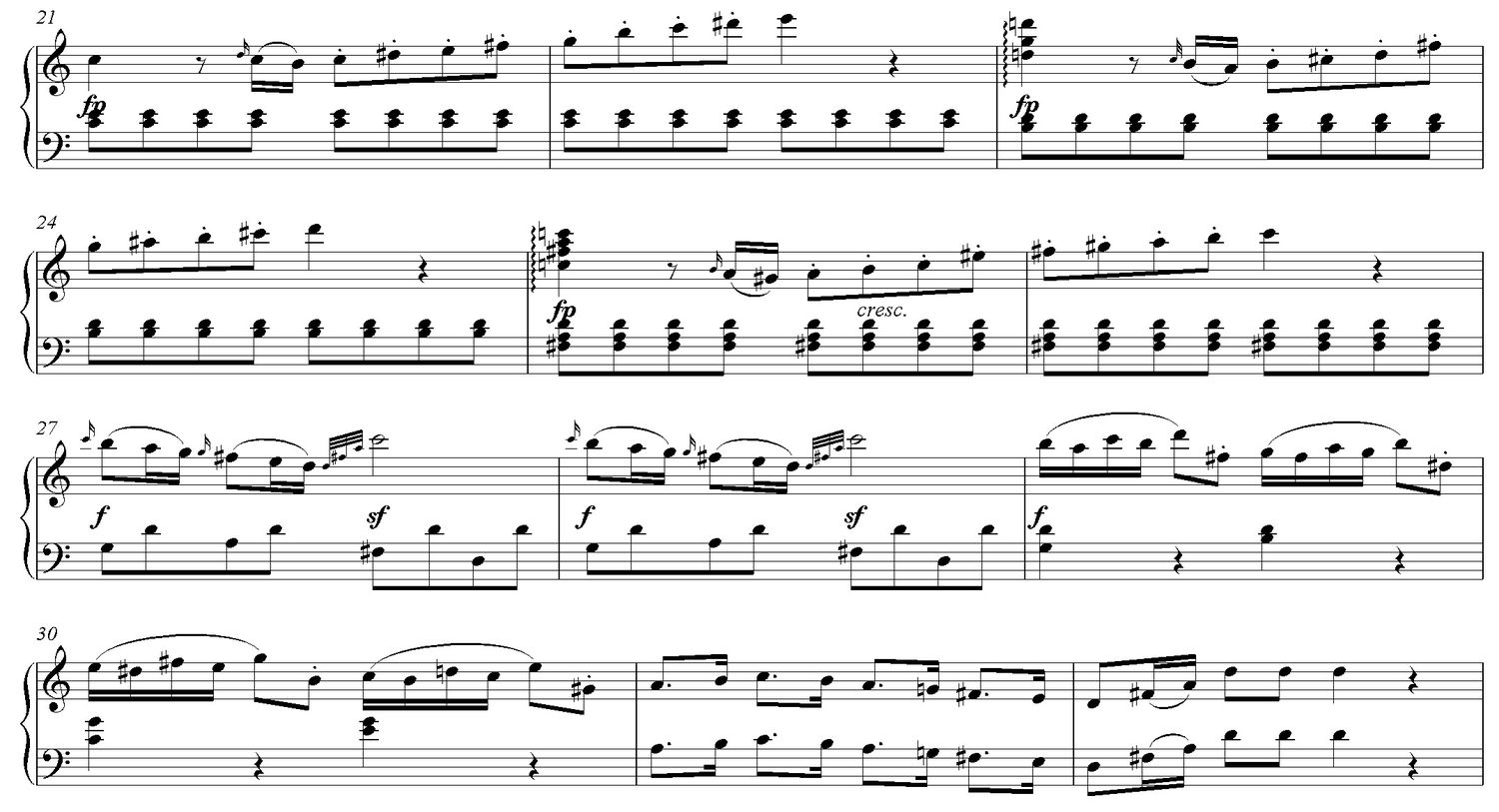Home>Production & Technology>Music Theory>How To Use Music Theory For Singing


Music Theory
How To Use Music Theory For Singing
Published: January 30, 2024
Learn how to effectively apply music theory to improve your singing skills and enhance your musical performance. Discover the secrets of using music theory to master the art of singing.
(Many of the links in this article redirect to a specific reviewed product. Your purchase of these products through affiliate links helps to generate commission for AudioLover.com, at no extra cost. Learn more)
Table of Contents
Introduction
Music theory is the foundation upon which all musical knowledge is built. It provides a framework for understanding the fundamentals of music, such as melodic and harmonic structures, rhythm, and form. While music theory is often associated with composers and musicians, it is also an essential tool for singers.
Whether you are a beginner singer or an experienced vocalist, having a solid understanding of music theory can greatly enhance your skills and musicality. It allows you to communicate effectively with other musicians, read sheet music, and even write your own songs.
In this article, we will explore the importance of music theory for singing and how you can use it to improve your vocal abilities. We will delve into the basics of music theory, including notes and scales, chords, harmony, and more. We will also discuss how you can apply music theory to your singing, including ear training and sight singing. Additionally, we will cover vocal techniques that are rooted in music theory.
By the end of this article, you will have a solid understanding of how music theory can benefit singers and how to incorporate it into your vocal practice.
Importance of Music Theory for Singing
Music theory is essential for singers as it provides a strong foundation for understanding and interpreting the music they perform. Here are some reasons why music theory is important for singers:
- Understanding the Structure of Music: Music theory helps singers comprehend the structure and organization of a song. It allows them to identify patterns, sections, and transitions, enabling them to deliver a more expressive and cohesive performance.
- Effective Communication with Musicians: When collaborating with musicians, singers with music theory knowledge can communicate their musical ideas more effectively. They can discuss elements like key changes, chord progressions, and tempo, ensuring everyone is on the same page and creating a harmonious musical experience.
- Reading Sheet Music: Music theory enables singers to read and interpret sheet music accurately. They can understand the musical symbols, notation, and rhythms, which is particularly crucial when performing classical music or working with a choir or an ensemble.
- Improvisation and Creativity: Knowledge of music theory provides singers with the tools to improvise and create their own melodies and harmonies. It allows them to experiment with different chord progressions, scales, and modes, expanding their musical horizons and adding a personal touch to their performances.
- Songwriting and Composition: Music theory empowers singers to become proficient songwriters and composers. It helps them understand song structures, chord progressions, and effective melodic writing. By utilizing music theory principles, singers can craft compelling and impactful original pieces.
Overall, music theory acts as a guide for singers on their musical journey. It provides them with a deeper understanding of the music they sing and allows them to communicate their musical ideas effectively. Whether you aspire to become a professional vocalist or simply want to improve your singing skills, investing time in learning music theory will undoubtedly enhance your musicality and performance capabilities.
The Basics of Music Theory
Before diving into the intricacies of music theory for singing, it’s important to grasp the fundamental building blocks. Here are the key elements of music theory:
- Notes: Music is made up of individual notes, which are represented by letters from A to G. Each note represents a specific pitch, and when combined, they create melodies and harmonies.
- Scales: A scale is a series of notes arranged in ascending or descending order. Common scales include the major scale, minor scale, and pentatonic scale. Scales provide the basic framework for melodies and define the tonality of a piece.
- Key Signatures: Key signatures are used to indicate the tonal center, or “key,” of a piece of music. They are represented by sharps or flats and help musicians identify which notes are altered throughout the composition.
- Chords: Chords are groups of notes played simultaneously to create harmony. The most basic chord is a triad, consisting of three notes: the root, third, and fifth. Chords play a vital role in supporting melodies and providing harmonic stability.
- Intervals: Intervals refer to the distance between two notes. They can be classified as major, minor, perfect, augmented, or diminished, depending on their specific distance and sound. Understanding intervals helps singers identify and reproduce different melodic patterns accurately.
- Rhythm: Rhythm relates to the arrangement of notes in time. It encompasses concepts such as beat, tempo, time signatures, and rhythmic patterns. Developing a solid sense of rhythm is crucial for singers to stay in sync with the music and deliver a cohesive performance.
- Form: Form refers to the overall structure of a piece of music. It describes how different sections, such as verses, choruses, and bridges, are organized and connected. Understanding musical form helps singers anticipate and navigate through various sections of a song.
By familiarizing yourself with the basics of music theory, you will gain a solid foundation for further explorations in singing. These concepts provide the tools necessary for understanding and interpreting music, allowing you to deliver more expressive and engaging performances.
Understanding Notes and Scales
Notes and scales are the building blocks of music. They form the foundation for creating melodies, harmonies, and chords. Understanding how notes and scales work is essential for singers. Let’s explore these concepts in more detail:
A note is a sound with a specific pitch. In music, notes are represented by letters from A to G. The distance between two notes is called an interval, and it determines the relationship and overall sound between the two pitches. Singers need to learn how to identify and produce different notes accurately, as this forms the basis for performing melodies and harmonies.
A scale is a series of notes played in ascending or descending order. Scales provide the framework for melodies and help establish the tonal center of a piece. The most common scale is the major scale, which consists of seven notes and follows a specific pattern of whole steps and half steps. For example, in the key of C major, the scale would include the notes C, D, E, F, G, A, and B.
Other important scales for singers to explore include the minor scale, which has a different pattern and evokes a different mood compared to the major scale. Additionally, the pentatonic scale, with its five notes, is often used in various musical genres and can add a unique flavor to vocal improvisations.
By understanding notes and scales, singers can navigate through different melodies and harmonies with confidence. It helps them identify and reproduce the correct pitches accurately, enabling them to deliver captivating performances with a strong sense of musicality.
Building Chords and Harmony
Chords and harmony play a vital role in music, providing depth, emotion, and complexity to a song. As a singer, understanding how chords are constructed and how they function within the context of harmony is essential. Let’s explore the process of building chords and their role in creating harmonies:
A chord is a group of three or more notes played simultaneously. The most basic chord is a triad, consisting of a root note, a third, and a fifth. The root note is the foundational pitch from which the chord is built. The third determines whether the chord is major or minor, contributing to its overall character and emotion. The fifth adds stability and completion to the chord.
Chords are built using intervals. For example, a major chord consists of a root note, a major third (four half steps above the root), and a perfect fifth (seven half steps above the root). In contrast, a minor chord has a minor third (three half steps above the root) instead of a major third.
Harmony is created when chords are combined and played sequentially or simultaneously. Harmony adds richness and complexity to a song, complementing the melody. Understanding harmony enables singers to harmonize with other vocalists or instruments and create interesting vocal arrangements.
Chords can be categorized into different qualities based on their sound and function. In addition to major and minor chords, there are also diminished and augmented chords, among others. These chords can add tension, color, and unique textures to a song when used appropriately.
As a singer, having a solid understanding of building chords and the principles of harmony can greatly enhance your musicality. It allows you to improvise vocal harmonies, create your own vocal arrangements, and communicate effectively with musicians when discussing chord progressions and harmonic structures.
By incorporating chords and harmony into your singing, you can elevate your performances and create a more immersive musical experience for your audience.
Applying Music Theory to Singing
Applying music theory to singing can greatly enhance your vocal abilities and overall musicality. Here are some ways you can incorporate music theory into your singing practice:
- Understanding Song Structure: Knowing music theory allows you to better understand the structure of a song. You can identify the different sections (verses, choruses, bridges) and how they relate to each other, enabling you to interpret and deliver the song more effectively.
- Interpreting Melodies: Music theory enables you to analyze melodies and understand their underlying structure. You can identify patterns, intervals, and phrase lengths, allowing you to accurately reproduce and express the melodic elements of a song.
- Harmonizing: With knowledge of music theory, you can harmonize your vocal lines with other singers or instruments. Understanding chord progressions and scales allows you to add harmonies that complement and enhance the overall musical arrangement.
- Improvising: Music theory provides you with the tools to improvise and create your own vocal embellishments. By understanding chord progressions, scales, and melodic patterns, you can confidently add improvised elements to a song, adding your own unique flair.
- Transposing: Transposing a song involves changing the key to suit your vocal range. Having a grasp of music theory makes it easier to transpose songs, ensuring that you can sing comfortably in a key that suits your voice.
- Songwriting: Music theory is invaluable for singers who want to write their own songs. Understanding chord progressions, melody construction, and song structure allows you to compose compelling and cohesive compositions that showcase your artistic vision.
By applying music theory to your singing practice, you can deepen your understanding and connection to the music you perform. It enhances your ability to interpret, express, and communicate through your voice, while also opening up opportunities for collaboration, improvisation, and creative expression.
Remember that incorporating music theory into your singing should be a gradual and continuous process. Start by familiarizing yourself with basic concepts, such as key signatures, scales, and chords, and gradually explore more advanced topics as you progress. Continually apply what you learn to your vocal practice, and watch as your singing abilities and musicality flourish.
Ear Training and Sight Singing
Ear training and sight singing are vital skills for singers, and music theory plays a crucial role in developing these abilities. Here’s a closer look at how music theory relates to ear training and sight singing:
Ear Training: Ear training involves developing your ability to recognize and reproduce musical elements by ear. This includes identifying intervals, chords, melodies, and rhythms without the aid of sheet music. Music theory provides the foundation for ear training by teaching you the theoretical concepts behind musical elements. It helps you understand the relationships between notes, chords, and melodies, making it easier to identify and reproduce them accurately.
By actively engaging in ear training exercises, such as interval recognition, chord identification, and transcription, you can sharpen your ability to hear and replicate music. This skill is invaluable for singers, as it allows you to learn songs more quickly, harmonize with other musicians, and improvise confidently.
Sight Singing: Sight singing is the ability to read and perform music notation on sight. Music theory equips you with the knowledge of symbols, notation, and rhythmic patterns, making it easier to interpret and perform sheet music accurately. By understanding the relationship between notes, rhythms, and dynamic markings, you can bring the music to life through your singing.
Practicing sight singing exercises regularly helps improve your sight-reading skills and expands your repertoire. It allows you to explore a wider range of musical genres and enhances your versatility as a singer. Additionally, sight singing cultivates your ability to internalize and execute different musical styles, making you a versatile performer.
Developing strong ear training and sight singing skills takes time and consistent practice. Utilize music theory knowledge to support your training, as it provides the necessary framework for recognizing, understanding, and reproducing the elements of music. As you continue to train your ear and read music notation, you will become more confident and proficient in your singing abilities.
Vocal Techniques and Music Theory
Music theory not only enhances your understanding of music but also directly influences your vocal techniques. By applying music theory principles to your singing, you can develop a stronger and more controlled voice. Here’s how music theory relates to vocal techniques:
Breath Control: Understanding music theory helps singers optimize their breath control. Music notation indicates the duration of notes through different rhythmic values, allowing singers to plan their breaths accordingly. Additionally, knowing the structure of phrases and sections in a song assists in managing breath support and sustaining notes effectively.
Intonation: Music theory provides a foundation for understanding and achieving accurate pitch. By recognizing intervals, scales, and chords, singers develop a stronger sense of intonation. This enables them to maintain pitch accuracy, sing in tune with other musicians, and execute melodic jumps and intervals with precision.
Phrasing and Dynamics: Music theory guides singers in interpreting and delivering songs with proper phrasing and dynamics. Understanding the structure and form of a piece allows singers to shape phrases, emphasize important musical moments, and create expressive dynamics. By incorporating music theory knowledge, singers can add nuance and emotion to their performances.
Articulation and Diction: Music theory plays a role in the clarity and precision of articulation and diction. Knowledge of rhythmic values helps singers articulate each syllable accurately and maintain a steady rhythm. Additionally, understanding how consonants and vowels interact with musical phrasing allows for clearer diction and improved communication of the song’s lyrics.
Tonal Quality and Resonance: Music theory influences vocal techniques related to tone production and resonance. By comprehending the relationship between pitch and vowel placement, singers can achieve resonance and develop a more desirable tonal quality. This knowledge helps singers produce a balanced and resonant sound throughout their vocal range.
By integrating music theory concepts into your vocal techniques, you can refine and enhance your singing abilities. Continually applying these principles in your practice sessions ensures that you develop a strong foundation of musicality and technical skill, allowing you to sing with precision, expressiveness, and control.
Conclusion
Music theory serves as a powerful tool for singers, empowering them to enhance their vocal abilities and deepen their understanding of music. By incorporating music theory into your singing practice, you gain a strong foundation for interpreting melodies, harmonizing with other musicians, and creating expressive performances.
From understanding the basics of notes and scales to building chords and exploring harmony, music theory provides singers with the knowledge to navigate through different musical elements. It enables you to communicate effectively with other musicians, read sheet music, and even create your own compositions.
Applying music theory to your singing practice enhances your ear training and sight singing skills, allowing you to recognize and reproduce musical elements accurately. It also influences your vocal techniques, from breath control and intonation to phrasing, dynamics, and articulation.
Remember that incorporating music theory into your singing should be a gradual and continuous process. Start by familiarizing yourself with the basics and gradually explore more advanced concepts. Consistency and regular practice are key to developing a strong musical foundation.
By investing time in learning music theory, you will not only improve your singing abilities but also deepen your appreciation and enjoyment of music. The more you understand the underlying principles of music, the more confident and expressive you will become as a singer.
So, embrace the power of music theory and unlock your full vocal potential. Let it be your guide as you explore, create, and connect through the beautiful art of singing.











